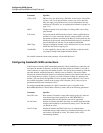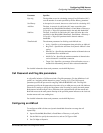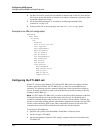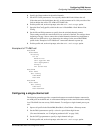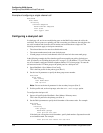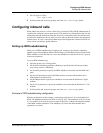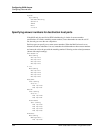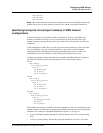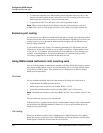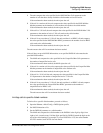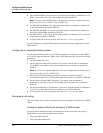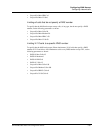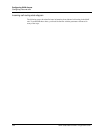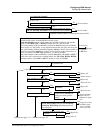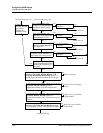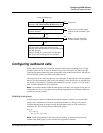
3-62 MAX 6000/3000 Network Configuration Guide
Configuring WAN Access
Configuring inbound calls
• 3–8 represent expansion slots. When looking at the back panel of the unit, slot 3 is the
bottom slot in the left bank of slots, followed by 4 and 5 in ascending order. Slot 6 is the
bottom right slot, followed by 7 and 8 in ascending order.
• 9 represents the LAN. The unit routes calls to the bridge/router module.
Note: When a unit has more than one digital modem slot card installed, the cards and
modems form a pool, and any modem can answer a call routed to any digital modem slot.
Exclusive port routing
If a call comes in on an ISDN line and the MAX unit finds no explicit call-routing information,
the unit can route the call by means of bearer service information. By turning on exclusive port
routing, however, you can prevent the MAX unit from accepting calls for which it has no
explicit routing destination.
If you set the System > Sys Config > Excl Routing parameter to No (the default), the unit
routes the call on the basis of bearer service. It routes voice calls to a digital modem, routes
V.110 calls to a V.110 module, and routes data calls to an AIM port or, if no AIM ports are
available, to the bridge/router. If you set Excl Routing to Yes and none of the specified
call-routing comparisons are successful, the unit drops the call.
Using DNIS-related methods to limit incoming calls
You can limit the number of simultaneous incoming calls that a MAX unit accepts on each of
up to sixteen dialed numbers. You can also limit incoming calls to calls from modem callers,
V.110 callers, or HDLC callers. Three terminal-server commands are available to display
DNIS sessions and statistics.
Overview
You can configure the MAX unit to limit the number of incoming calls on the basis of:
• Called number ID (DNIS) presented by calls
• MAX resource that answers the call: modem, HDLC, or V.110
• Combined maximum number of calls to modem, HDLC, and V.110 resources
Note: The MAX unit considers a call to be an HDLC call if it is not a modem call or a V.110
call.
The unit returns the cause Busy for rejected calls.
If the unit receives a call that does not specify a dialed number or that provides a dialed number
not specified by the DNIS #N parameters (where N=1 to 16), the unit considers the call as
having an Unspecified DNIS.
Call routing
When you set Ethernet > Mod Config > DNIS Options > DNIS Limitation to Yes, and the
MAX unit receives a call that provides a DNIS number specified by Ethernet > Mod Config >
DNIS Options > DNIS #N, the unit routes the call as follows:



